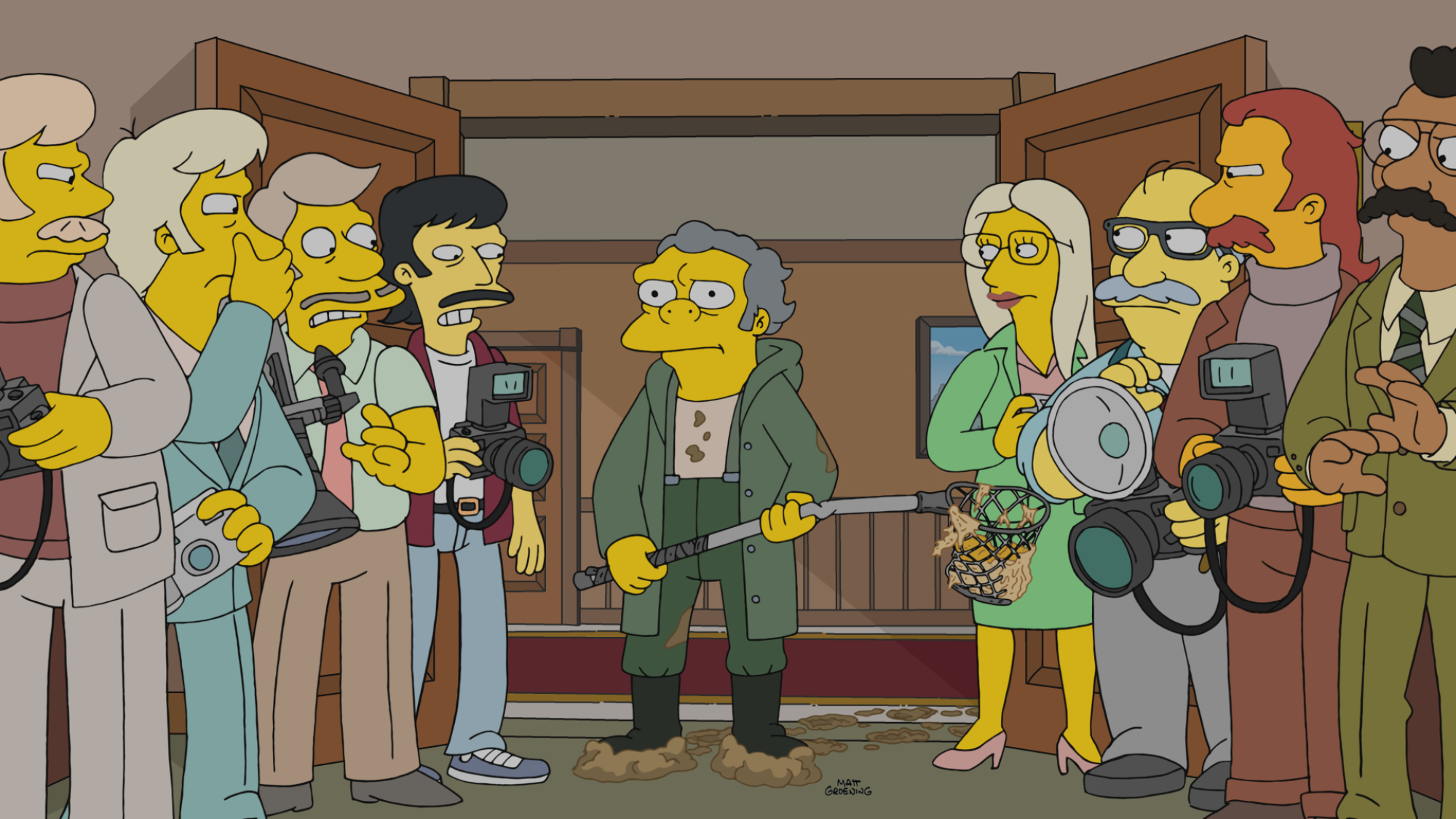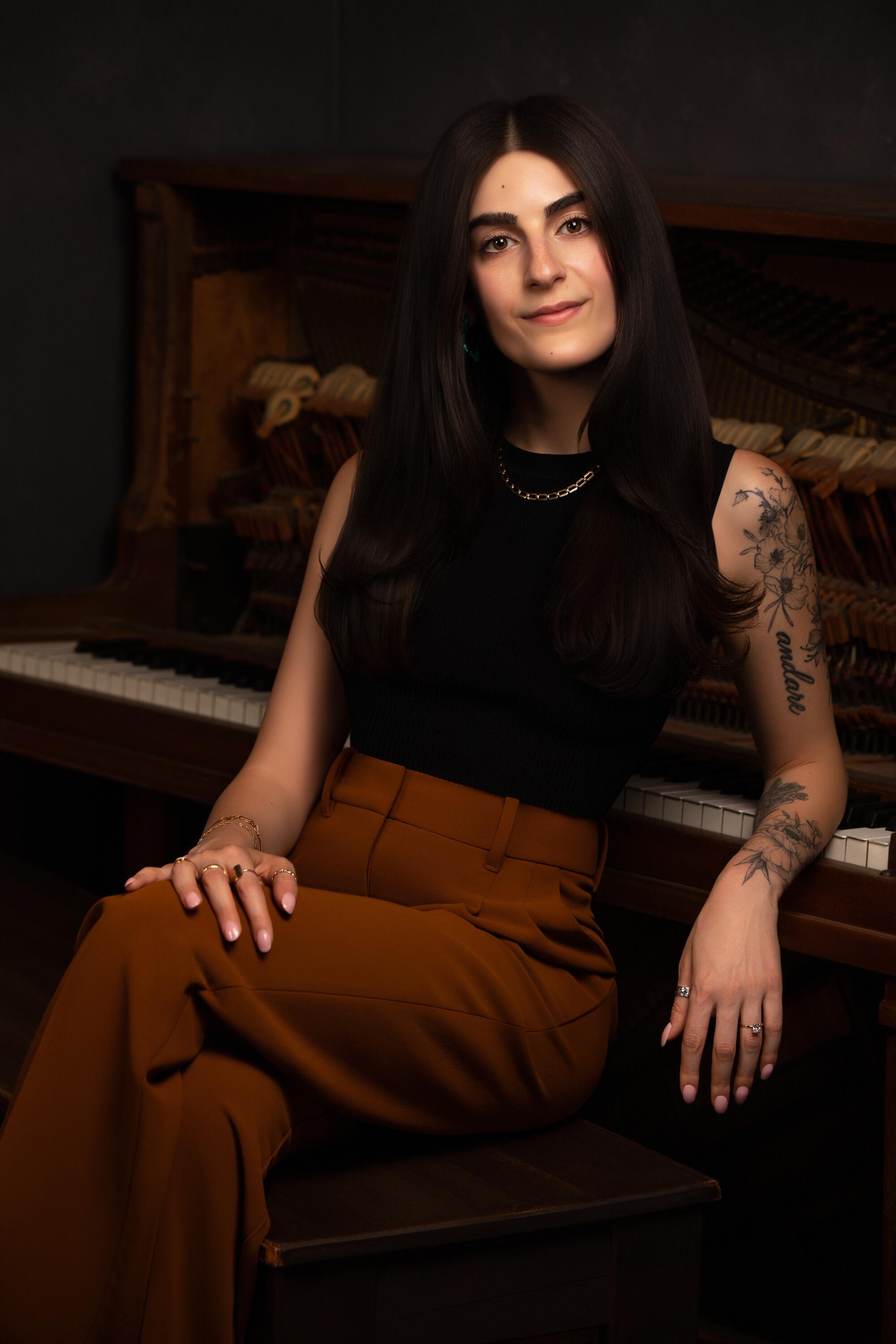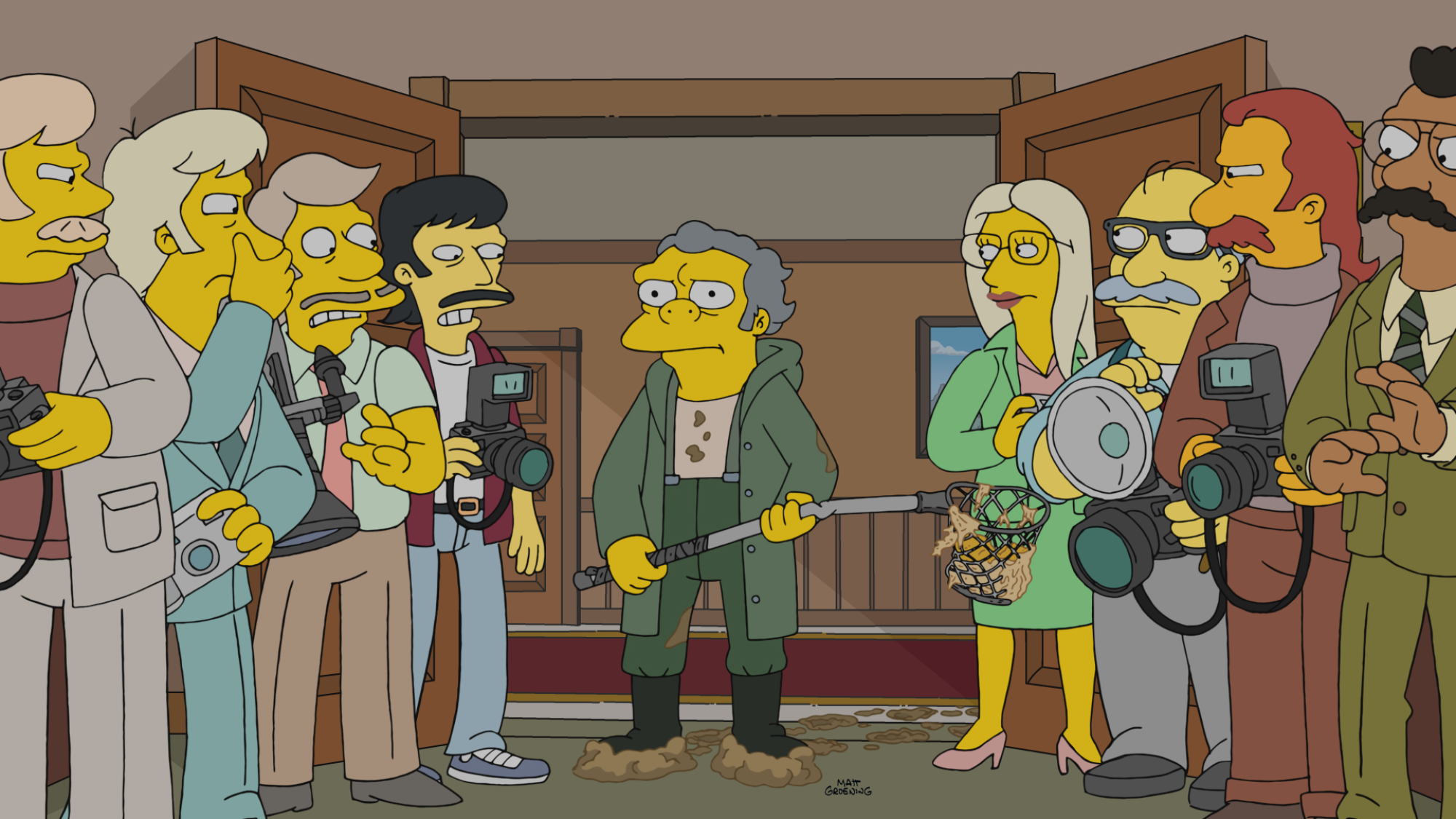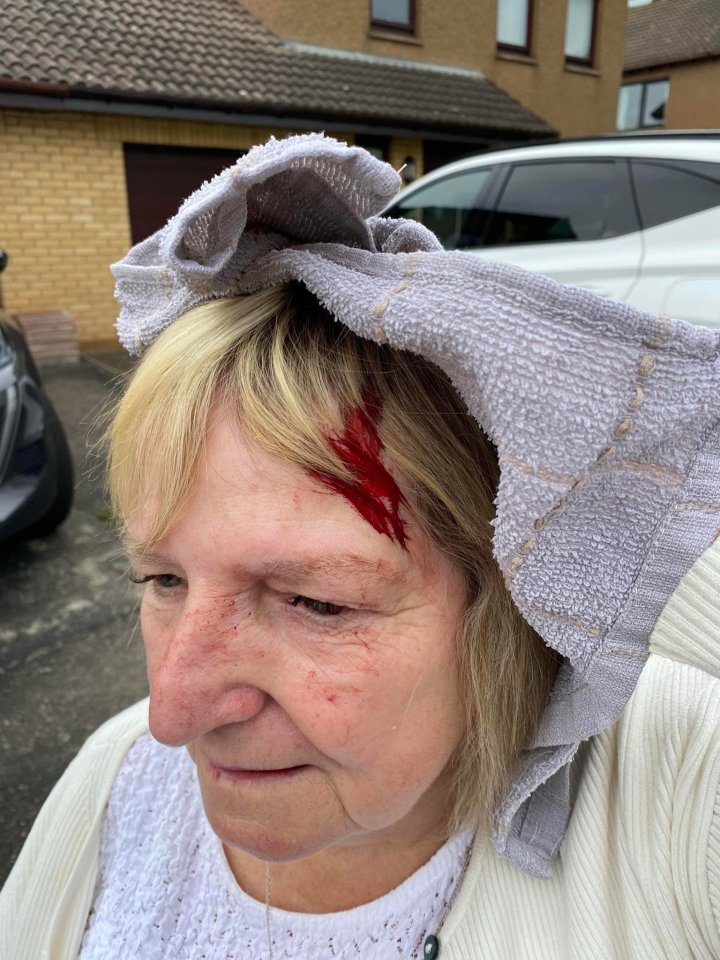‘The Simpsons’ makes music for ‘Treehouse of Horror’ with Bleeding Fingers
Matt Groening knows what a real theremin sounds like.
As a kid who grew up on the celluloid junk food of the 1950s and ’60s, “The Simpsons” creator heard the ghostly wail of that early electronic instrument in sci-fi film scores and in albums by his beloved Frank Zappa. Its cousin, the ondes martenot, was featured in one of Groening’s favorite classical pieces — the “Turangalîla-symphonie” by Olivier Messiaen — which would inspire the name for a lead character in “Futurama,” Turanga Leela.
So, when composer Alf Clausen was recruited in the sophomore season of Groening’s popular new show about a yellow nuclear family and answered a request to use theremin — a small lectern with two metal antennae sticking out, which a musician plays by moving their hand in the space between — in the inaugural “Treehouse of Horror” episode in October 1990, Groening immediately recognized it was a fake; it was bouncing around the scale in a way a real theremin can’t do.
“And [Clausen] admitted, yeah, it wasn’t a theremin; it was a keyboard,” Groening recalls. “And it took many years for us to get a real theremin. The downside of the theremin is that it can’t play all the notes — but it’s got a feel to it that is so great.”
Clausen quickly became a fixture of “The Simpsons,” scoring every episode from that first “Treehouse of Horror,” now an annual Halloween tradition, all the way through the end of the 28th season, which wrapped in 2017, as well as composing many unforgettably funny songs with the show’s writers. Groening often referred to Clausen as the show’s “secret weapon.”

A scene from “Treehouse of Horror XXXVI,” this year’s Halloween episode of “The Simpsons.”
(“The Simpsons” & 20th Television)
The show’s producers were always pushing to save money, Groening says, and to have the show scored with synthesizers and a drum machine — par for the course for TV music in the 1990s. But Groening felt differently. “I always thought that the music really helped the show in a way, because I thought the animation was kind of … primitive,” Groening punctuates the word with a laugh, “and I thought, man, though, if we have great orchestral music backing up these goofy drawings, it’ll mean: ‘Hey, we really meant it!’ And Alf got that right away.”
Groening was none too happy, then, when Clausen was fired by Fox in 2017. The official reason stated was the high cost of recording every episode with a live orchestra; but the veteran composer, who had previously scored TV series like “Moonlighting” and “ALF” (no relation), was 76 when he got the boot, later suing Disney and Fox over age discrimination. (Clausen died earlier this year at age 84.)
Enter Bleeding Fingers Music, a composer collective founded in 2014 by Hans Zimmer, Russell Emanuel and Steven Kofsky that has grown from its original six composers to a stable of 26. Zimmer had been a longtime go-to for “Simpsons” executive producer James L. Brooks, and he won over a skeptical Groening with his zany score for “The Simpsons Movie” in 2007.
With a composer void, Brooks approached Zimmer about taking over the series, and Zimmer proposed Bleeding Fingers — whose credits at that point included several entries in the “Planet Earth” series and various History Channel documentaries and reality shows.

Russell Emanuel of Bleeding Fingers.
(Kevin Shelburne)
“It took a long time for the decision to be made,” says Emanuel, a cheeky Brit who got his start making soundalike rock albums in the 1980s and co-formed Extreme Music in 1997, a music library company that produced EDM tracks for shows like “Top Gear.” Zimmer was an early contributor to Extreme Music, and in 2001 the company moved into his vast Remote Control Productions campus in Santa Monica.
“It was taken very seriously,” Emanuel adds. “The first I knew about it was Hans calling me into his room and going, ‘We’ve got “Simpsons.” Don’t f— it up.’”
It was an awkward arranged marriage for Groening — and a “baptism by fire” for Emanuel and his cohort. They had an ample three weeks to tackle their very first episode, a “Game of Thrones” parody titled “The Serfsons,” which featured some theremin solos. Groening asked if it was a live theremin. It was not, the new composers sheepishly replied.
“He could hear it immediately, and completely called us out on it,” says Emanuel. “We had to go back and redo that whole thing. There were two or three big issues for him — but, you know, that was part of us learning the language.”
On a recent Friday morning on the Fox scoring stage, just around the corner from Groening’s office of nearly four decades, the “Simpsons” creator was smiling as a live orchestra recorded the score for Sunday’s new “Treehouse of Horror” episode (streaming next day on Hulu). There was a woodwind virtuoso, Pedro Eustache, making wild and beautiful sounds in an isolated booth with his arsenal of flutes — and out on the stage there was a real, live theremin.
Running the session was Kara Talve, a young but dominant digit of Bleeding Fingers who has been the principal composer on “The Simpsons” since Season 30; this is her sixth “Treehouse of Horror” episode. After graduating from Berklee College of Music, she took an assistant job at Bleeding Fingers — mostly, she says, because she wanted to work on “The Simpsons.”

Kara Talve of Bleeding Fingers, who has been the principal composer of “The Simpsons” since Season 30.
(Sage Etters)
“But I had to convince Russell that I could do it,” Talve says, sitting in her studio next to her boss. “I don’t think he trusted me yet. But also: Why would he, because I was like 5 years old.”
It’s quickly apparent how self-deprecating and silly they both are — Emanuel recently got a tattoo of a Spotify code that, when scanned, triggers Justin Timberlake’s “SexyBack” — but also how seriously they take this job.
“The responsibility of working on a show like this, we don’t take it lightly,” Talve says. “And because I was so intrigued by the show, and I really, really wanted to work with Russell on ‘The Simpsons,’ I went back and I listened to those old episodes — because I want to honor the musical language that Alf left, and that Danny Elfman left.” (Elfman composed the iconic theme song, which Emanuel and Talve consider “the heart of the show.”)
“And it’s a very specific palette,” she adds. “Like, not to get too nerdy about it, but there really is this harmonic language that’s only in Springfield.”
There are other, subtle ingredients to a good “Simpsons” score: For instance, the music should (usually) duck out of the way for the verbal or visual punchline. And the show has always overflowed with pop culture references and spoofs, which requires an almost bottomless well of musical knowledge. That’s one area where having two dozen other composers working in the same building comes in handy.
“There’s this adaptability that you have to have on this show,” says Talve, “and it’s every genre under the sun, and you kind of just have to figure out how to do that. And Russ was a big part in teaching me, because he’s the king of production music.” She adds that the composers in the collective also play a variety of instruments, so “I can just ask them to come in and play this line, because we can’t sell it to the showrunners if it sounds too fake.”
The average “Simpsons” episode has between five and 10 minutes of score — which might sound like easy street.
“The amount of starts is very challenging,” Talve says. “And it is deceiving. People go, ‘Five minutes? Oh, you’re just doing a bunch of stings’ or whatever. But I want to debunk this because it’s actually way harder, for me personally, to do 30 short cues for one episode than to have one long cue that’s five minutes because the amount of emotional turns that the music has to have, and that you have to hit all this stuff within 10 seconds — it’s actually really frickin’ hard.”
(In 2014, Clausen told me he always joked that “I can make you feel five ways in 13 seconds.”)

The Simpson family in a segment from this year’s “Treehouse of Horror.”
(“The Simpsons” & 20th Television)
Most episodes are recorded with small ensembles at the Bleeding Fingers facility, but the “Treehouse of Horror” chapters are special; they tend to have wall-to-wall music, and the producers splurge on a full orchestral session at Fox — just like the old days.
This year’s anthology spoofs “Jaws,” “Late Night With the Devil” and “Furiosa.” Talve’s score bobs and weaves accordingly, from big brassy horror to eerie synths to world percussion and a custom-made plastic flute.
Groening, who was full of praise for Talve’s “Treehouse” score, has gradually warmed to the Bleeding Fingers team approach — viewing it less like a factory churning out product and more like the way animators work.
“The nature of animation, with maybe two or three exceptions in the history of the medium — it’s all a collaboration,” Groening says. “We’ve got a lot of ‘Simpsons’ writers, we have a lot of voice actors, a lot of animators, a lot of musicians. I mean, one of the great things about that particular session was that these are some of the greatest musicians in Los Angeles, playing amazing music.”
He even wishes people could witness it in person.
“There should be live concerts of this music because it is so much fun to listen to,” he says.” And it gets a little constrained, you know, when it’s supporting goofy animation — but as music, it’s really fantastic.”










